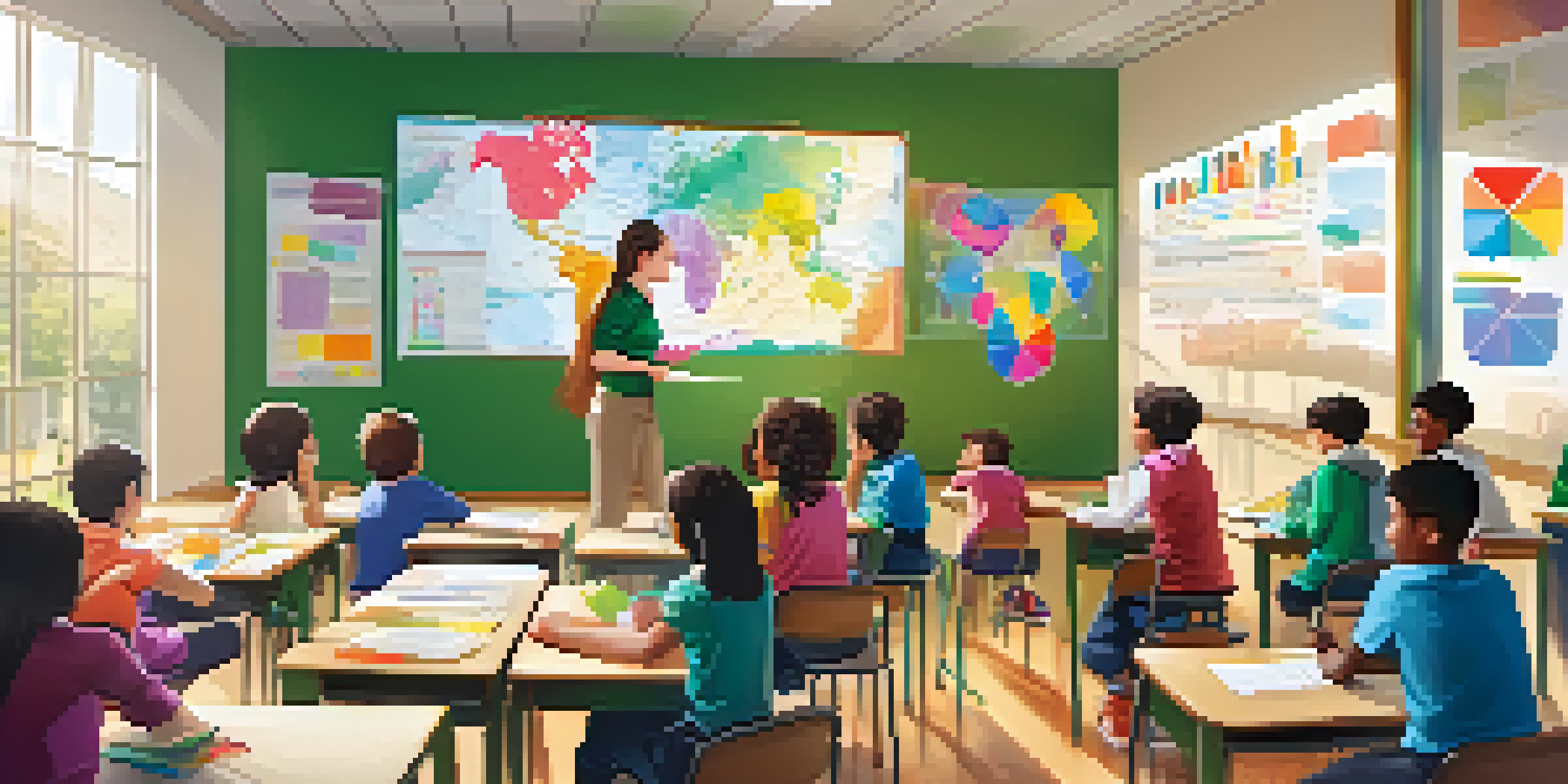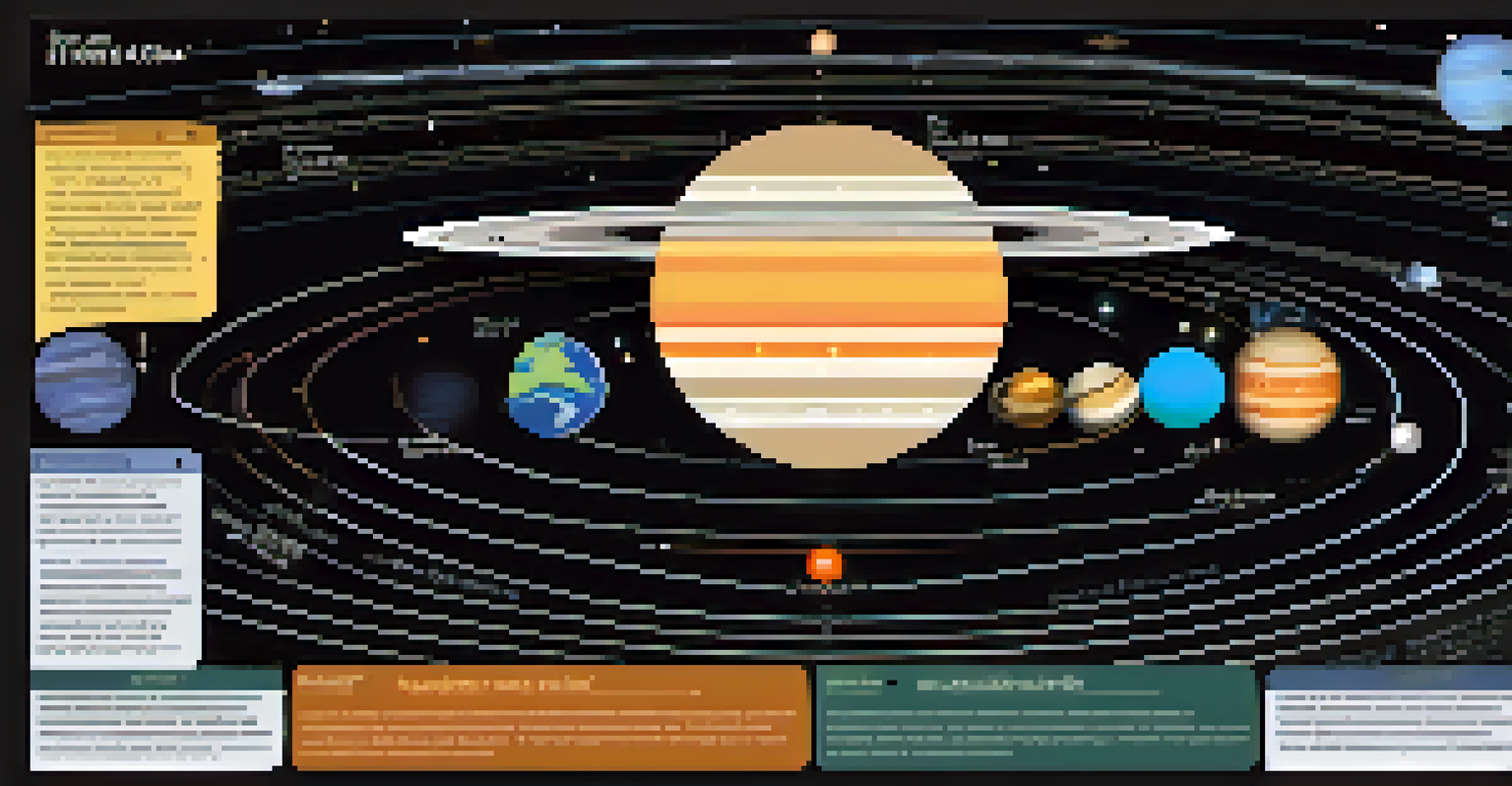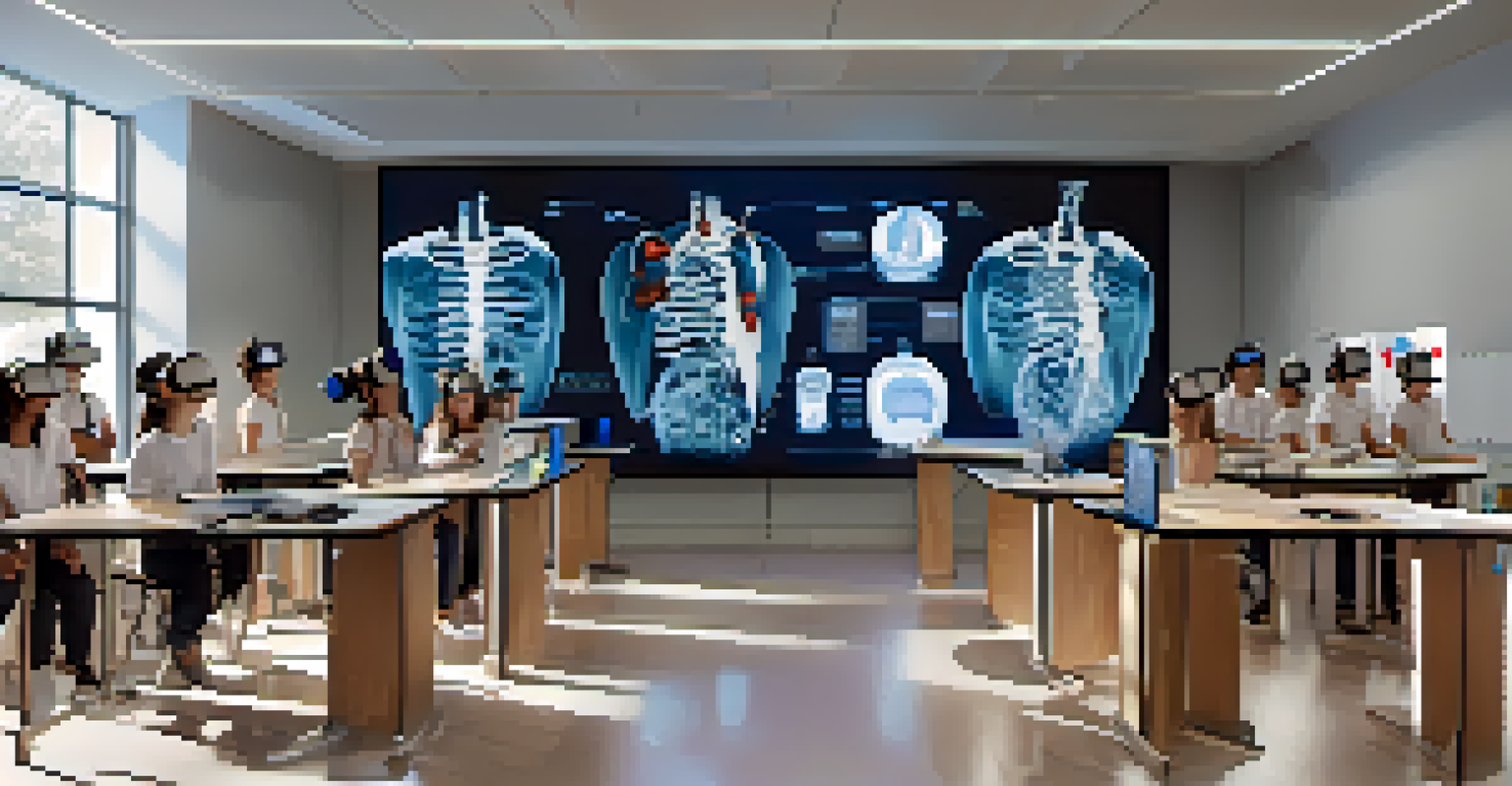The Role of Visual Learning in Cognitive Development for Students

Understanding Visual Learning and Its Importance
Visual learning refers to the process of acquiring knowledge through visual aids like images, diagrams, and videos. This method is especially beneficial for students who find it easier to grasp concepts when they can see them. By appealing to our sense of sight, visual learning can make complex information more digestible and engaging.
A picture is worth a thousand words.
For instance, imagine trying to learn about the solar system. A textbook may describe the planets, but a colorful diagram or a video tour can transform that information into an exciting visual experience. This not only captures attention but also enhances memory retention, as visual stimuli are often easier to recall than text alone.
In today's education landscape, where diverse learning styles exist, understanding and incorporating visual learning techniques can make a significant difference. It allows educators to cater to varied preferences, ensuring that every student has the opportunity to succeed.
How Visual Learning Affects Cognitive Development
Cognitive development refers to the progression of thinking skills and understanding that occurs as a person grows. Visual learning contributes to this development by aiding in comprehension and critical thinking. When students engage with visual materials, they are often required to analyze, interpret, and synthesize information, which are essential cognitive skills.

For example, consider a history lesson on ancient civilizations. A timeline charting major events can help students visualize the chronological relationships, enhancing their understanding of cause and effect. This not only builds their knowledge but also strengthens their ability to think critically about historical events.
Visual Learning Boosts Understanding
Visual learning utilizes images and videos to make complex concepts easier to grasp and remember.
By reinforcing these cognitive skills, visual learning helps students become more adept at problem-solving and decision-making. As they practice these skills, they are better equipped to tackle more complex subjects in the future, paving the way for lifelong learning.
The Benefits of Visual Aids in Learning Environments
Visual aids, such as charts, videos, and infographics, provide numerous benefits in educational settings. They can simplify complicated topics and provide a clear representation of information, making it more accessible to students. This is particularly useful in subjects like mathematics and science, where concepts can be abstract and difficult to grasp.
Visual learners remember 80% of what they see, 20% of what they hear, and 10% of what they read.
Moreover, visual aids can help to maintain student interest and motivation. A well-designed presentation or interactive visual can captivate students’ attention far more effectively than a lecture. This engagement is crucial for fostering a positive learning environment where students feel encouraged to participate and explore.
Additionally, visual aids cater to different learning styles, particularly for visual learners who absorb information better when it's presented in a graphical format. This inclusivity ensures that all students have the opportunity to engage with the material in a way that resonates with them.
Incorporating Visual Learning Strategies in Classrooms
To effectively incorporate visual learning strategies, educators can utilize a variety of tools and resources. For instance, using PowerPoint presentations with engaging visuals can enhance traditional lectures. Teachers can also encourage students to create their own visual representations, such as mind maps or posters, to reinforce their understanding of the material.
Interactive technologies, such as smart boards and educational software, can further enrich the visual learning experience. These tools allow for dynamic presentations and student participation, making lessons more engaging. For example, students can collaborate on a digital platform to create a visual project, fostering teamwork and creativity.
Cognitive Skills Through Visuals
Engaging with visual materials enhances critical thinking and problem-solving skills in students.
Ultimately, the goal is to make learning more interactive and enjoyable. By integrating visual elements into lessons, educators can help students connect with the material on a deeper level and promote an active learning environment.
The Role of Color and Design in Visual Learning
Color and design play a crucial role in visual learning, as they can significantly influence how information is perceived and understood. Studies have shown that certain colors can evoke different emotions and enhance memory retention. For instance, using warm colors can create a sense of urgency, while cool colors may promote calmness and focus.
Additionally, the design of visual materials matters just as much as their content. A cluttered or poorly designed graphic can confuse rather than clarify. On the other hand, a well-structured infographic can present information in a clean, easy-to-follow manner, making it more digestible for students.
By paying attention to color and design, educators can create more effective visual aids that capture attention and enhance learning. This thoughtful approach can lead to improved comprehension and engagement in the classroom.
Challenges of Visual Learning in Education
While visual learning has many benefits, it also presents challenges that educators must navigate. One major challenge is the tendency to over-rely on visuals, which can lead to superficial understanding. If students focus solely on images without grasping the underlying concepts, their learning may become fragmented.
Another issue is accessibility. Not all students may have the same ability to interpret visual materials, especially those with visual impairments or learning disabilities. Educators must ensure that visual aids are inclusive and consider alternative methods for conveying information.
Future Innovations in Visual Learning
Emerging technologies like AR and VR are set to revolutionize visual learning experiences in education.
Addressing these challenges requires a balanced approach. Educators should combine visual learning with other instructional methods to foster a comprehensive understanding of the material, ensuring that all students can benefit from the learning experience.
The Future of Visual Learning in Educational Settings
As technology continues to advance, the future of visual learning in education is bright. Tools such as augmented reality (AR) and virtual reality (VR) offer exciting possibilities for immersive learning experiences. Imagine students exploring a 3D model of the human body or walking through a virtual historical site – these experiences can deepen understanding in ways traditional methods cannot.
Moreover, the rise of online learning platforms has made visual content more accessible to a broader audience. Students can engage with interactive videos and graphics at their own pace, allowing for personalized learning experiences. This flexibility is particularly important in today's diverse educational landscape.

Looking ahead, it's crucial for educators to embrace these innovations and continue refining their visual learning strategies. By staying current with advancements and adapting to students' needs, educators can create engaging, effective learning environments that promote cognitive development.